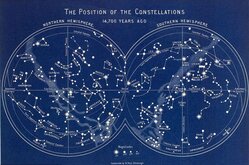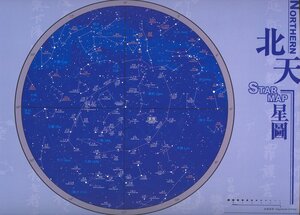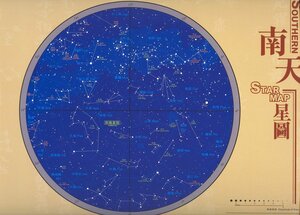Eighty-eight constellations
 | |
| Base Info | |
| Term | Eighty-eight constellations |
|---|---|
| Origin | Modern astronomy |
| Related Articles | Zodiac |
The eighty-eight constellations are a concept in astronomy and are also the creative material of ACGN.
Introduction
A constellation is an artificially divided sky area containing several stars in order to facilitate the identification of stars in the sky. Generally speaking, the "eighty-eight constellations" are a concept in modern astronomy.
Constellations were first used by ancient Greek, Egyptian, Babylonian and other ancient Mediterranean civilizations to divide the sky. In ancient China, star officials were used to divide the sky. Since the classical period, some constellations have been split, added, withdrawn, renamed, etc. After several evolutions, today's eighty-eight constellation pattern was officially established by the International Astronomical Union in 1930. The 88 constellations are based on the 48 Ptolemaic constellations of ancient Greece and improved by adding and splitting some constellations.
Most constellations are related to ancient myths and legends (ancient Greece, ancient Rome, etc.). Many of the images and names of constellations are derived from characters, gods, animals, etc. in myths and legends, such as Leo, Scorpio, Orion, etc. But some of them have nothing to do with it, but are constellations that were later established to fill in the blank areas of the sky. Since most of the civilizations with advanced astronomy in ancient times were located in the northern hemisphere, many new constellations discovered in the southern hemisphere in modern times were named after scientific instruments.
Modern astronomy established the concept of "celestial sphere". The celestial sphere is an imaginary sphere with the center of mass of the Earth as the center (geocentric celestial sphere) or the center of mass of the sun as the center of the sphere (heliocentric celestial sphere) and infinite length as the radius. From the perspective of observing the center of the sphere, all stars and other celestial bodies have projections on the celestial sphere. The celestial sphere is divided into celestial longitude and latitude, and a celestial coordinate system is established. The coordinate position of a star on the celestial sphere can be established through celestial longitude and celestial latitude, so as to study the position changes and movement patterns of stars, and can also be used for navigation.
Among them, the latitude line of 0° latitude on the celestial sphere is also called the celestial equator, the north of the celestial equator is called the northern sky area or the northern star area, and the south is called the southern sky area or the southern star area. Among the 88 constellations, there are 29 in the northern sky area, 47 in the southern sky area, and 12 near the celestial equator and ecliptic. The ecliptic is the projection of the sun's path on the celestial sphere from the perspective of the earth. The 12 constellations that span the zodiac are also called "zodiac signs".
Related works
- Saint Seiya: The Cloths of the Saints are based on the 88 constellations.
- StaRevo: 88 Seiza no Idol Kakumei
- Uchu Sentai Kyuranger
| |||||||||||||||||

